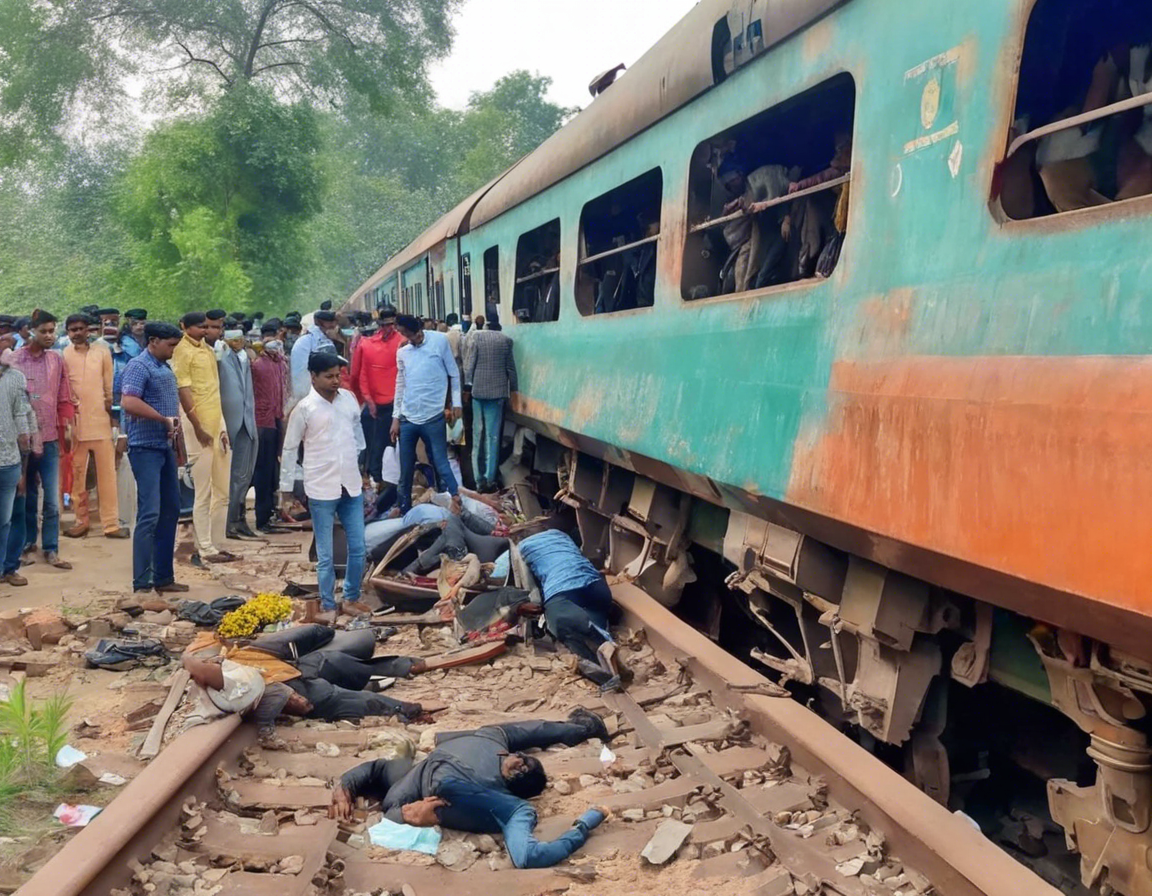On the evening of August 20, 2021, tragedy struck near Jamtara district in the Indian state of Jharkhand. A major train accident occurred, leaving many injured and claiming the lives of several individuals. The incident sent shockwaves across the country and sparked widespread concern regarding the safety and security of the railway system. As investigators work tirelessly to piece together the events leading up to the accident, it is essential to understand the key details and factors that may have contributed to this devastating event.
The Incident
The train accident near Jamtara resulted in the derailment of multiple coaches, leading to chaos and confusion among passengers and authorities alike. The precise cause of the derailment is still under investigation, with conflicting reports and theories emerging in the aftermath of the tragedy. Eyewitness accounts describe a scene of panic and destruction as the train veered off the tracks, causing significant damage and loss of life.
Location and Context
Jamtara, a district known for its scenic landscapes and cultural heritage, became the epicenter of a national tragedy as news of the train accident spread rapidly. Located in the eastern part of India, Jharkhand has a significant railway network that plays a crucial role in the transportation of goods and passengers across the region. The accident near Jamtara underscored the risks and challenges associated with maintaining a safe and efficient railway system in a densely populated country like India.
Possible Causes
While the exact cause of the Jamtara train accident is yet to be determined, several potential factors have been identified as potential contributors to the derailment. These can include track defects, signal failures, human error, adverse weather conditions, and equipment malfunctions. Investigators are likely exploring each of these possibilities to ascertain the root cause of the tragedy and prevent similar incidents in the future.
Response and Recovery Efforts
In the aftermath of the Jamtara train accident, emergency response teams, including medical personnel, law enforcement agencies, and railway authorities, mobilized quickly to provide assistance to the injured and address the logistical challenges posed by the derailment. Rescue operations were launched to extricate passengers trapped in the wreckage, while efforts to restore the disrupted railway services began in earnest.
Impact and Implications
The repercussions of the Jamtara train accident are far-reaching and profound, affecting not just the immediate victims and their families but also raising broader questions about the state of railway safety in India. The incident has reignited debates about the need for stricter regulations, enhanced infrastructure maintenance, and improved training for railway personnel to prevent similar accidents from occurring in the future.
Lessons Learned
As the investigation into the Jamtara train accident continues, it is imperative for authorities and stakeholders to reflect on the lessons learned from this tragedy. Strengthening safety protocols, investing in technology upgrades, conducting regular maintenance checks, and prioritizing passenger safety are all critical components of a comprehensive railway safety strategy. By embracing a culture of vigilance and accountability, the railway industry can mitigate risks and enhance the resilience of the transportation network.
FAQs
- What caused the Jamtara train accident?
-
The exact cause of the accident is still under investigation, with factors such as track defects, signal failures, human error, adverse weather conditions, and equipment malfunctions being considered.
-
How many people were injured in the accident?
-
The precise number of injuries has not been officially confirmed, but reports indicate that a significant number of passengers sustained injuries during the derailment.
-
Was the train operating at high speed before the accident?
-
The speed of the train at the time of the accident is a subject of investigation, with authorities examining whether overspeeding played a role in the derailment.
-
What measures are being taken to prevent similar accidents in the future?
-
Railway authorities are likely to implement stricter safety protocols, conduct thorough inspections of infrastructure, and enhance training for staff to prevent future accidents.
-
How will the victims of the accident be compensated?
- Compensation for the victims of the Jamtara train accident is typically provided through insurance policies, government schemes, and legal recourse for those affected by the tragedy.
